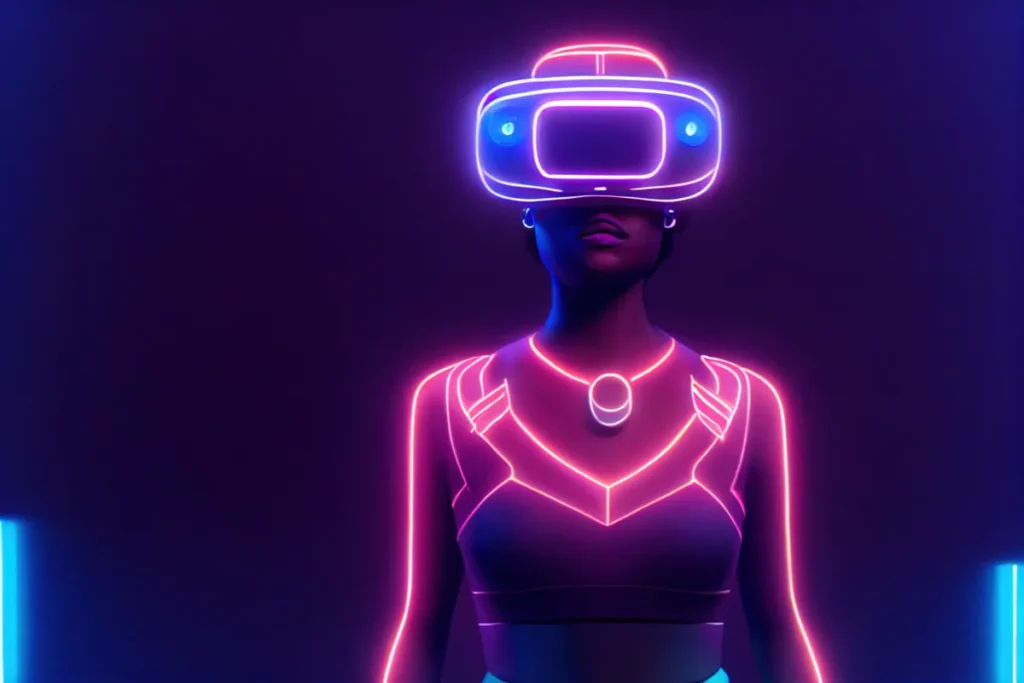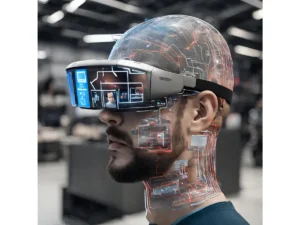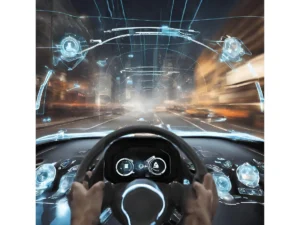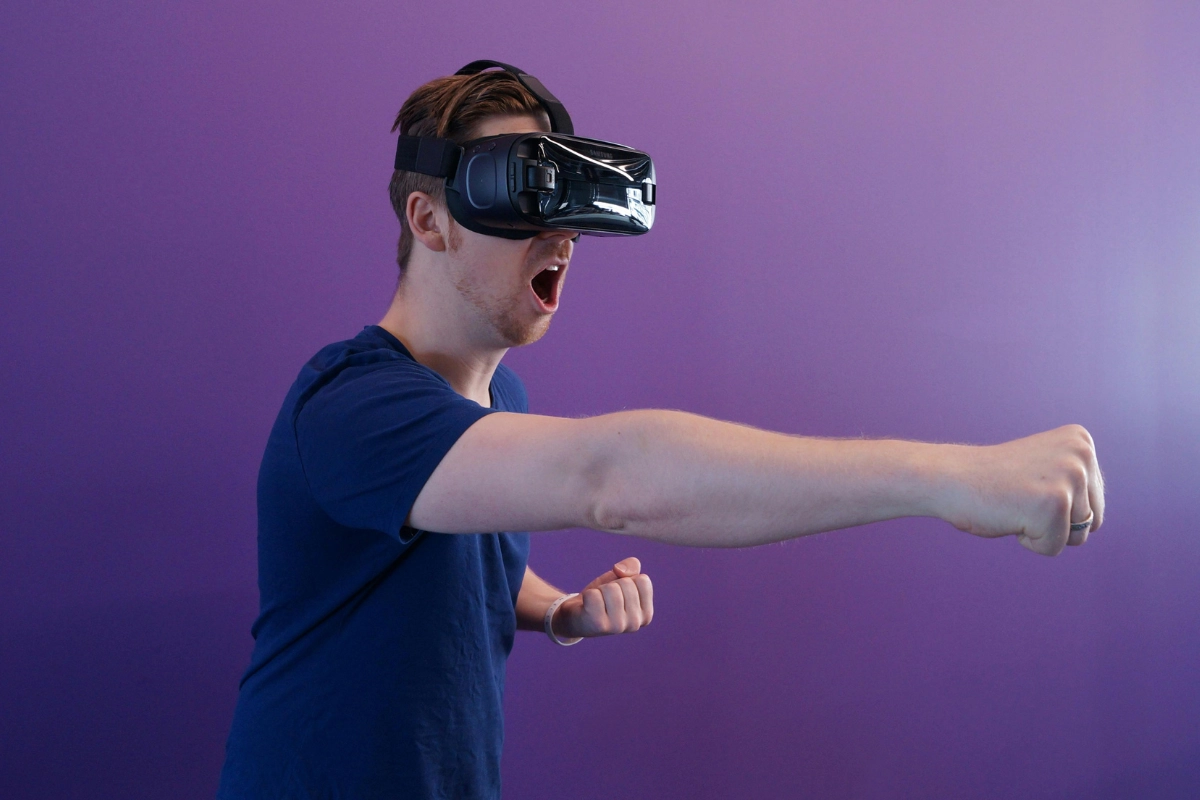
Introduction of Augmented Reality (AR):
Augmented Reality (AR) stands at the forefront of technological innovation, seamlessly merging the physical and digital worlds. It enriches our understanding of reality by overlaying digital information onto the physical environment. Beyond its entertainment applications, AR is evolving into a transformative force across industries, shaping our daily lives, redefining automation, and offering inclusive solutions for diverse demographics.
Recent Technological Advancements:
Recent strides in AR technology are instrumental in its integration with automation. Improved sensors, advanced computer vision algorithms, and sleek AR hardware are driving this evolution. The convergence of these advancements with automation is evident in sectors such as manufacturing and logistics.
Current Applications of Augmented Reality:
In manufacturing, AR is optimizing production processes by providing real-time guidance to workers. Boeing, a leader in aerospace, utilizes AR systems to assist technicians in assembling intricate aircraft components, reducing errors and enhancing efficiency. This application underscores how AR is not merely augmenting reality but enhancing precision within automated workflows.
AR’s integration into daily life extends beyond gaming and entertainment. It has become a vital component in workplaces, enhancing productivity and decision-making. The synergy between AR and automation is particularly pronounced in fields where precision and efficiency are paramount.
AR’s practical use cases are diverse, impacting sectors from healthcare to warehousing. In logistics, AR aids workers in swift and accurate item identification for shipment. DHL, a global logistics giant, employs AR smart glasses to guide warehouse workers through the picking process, streamlining fulfillment and reducing errors. This highlights AR’s role in not just enhancing but optimizing tasks within automated workflows.
Impact on Industries:
The impact of AR on industries is profound, especially when harmonized with automation. In healthcare, AR-assisted surgeries are becoming commonplace, allowing surgeons to access critical patient information and visual guides during procedures, ultimately improving precision and patient outcomes. This synergy demonstrates the potential to revolutionize complex tasks across diverse sectors.
Challenges and Solutions:
The integration of AR with automation presents challenges, such as seamless collaboration between human and machine interfaces. Ongoing research and development efforts are addressing these challenges, with collaborative robots (cobots) guided by AR being developed to work alongside human counterparts. This approach showcases the potential for harmonious collaboration between humans and automated systems.
Emerging Trends in Augmented Reality:
Emerging trends in AR technology, including intuitive content creation tools and wearable devices, are propelling its integration with automation. The adoption of AR smart glasses in industrial settings, exemplified by Microsoft’s HoloLens, signifies a shift towards hands-free, context-aware computing. These trends underscore the dynamic role of AR in shaping the future of automation.

User Experience Considerations:
User experience remains a focal point in AR development for automation. Designers are placing emphasis on creating interfaces that seamlessly integrate with automated processes, ensuring that human operators can intuitively interact with AR systems. This user-centric approach enhances not only efficiency but also the overall experience of working with automated technologies.
AR’s Impact on Different Demographics:
Education for School-Going Children:
AR holds immense promise in revolutionizing the educational experience for school-going children. AR-enhanced textbooks and educational apps offer dynamic and interactive content, transforming traditional learning materials into engaging, immersive lessons. Students can explore historical events, visualize scientific concepts, and participate in virtual experiments, fostering a deeper understanding and retention of knowledge.
Moreover, AR facilitates personalized learning experiences, catering to individual learning styles. Interactive lessons and virtual simulations cater to diverse learning needs, making education more accessible and enjoyable for children with varying abilities.
Assistance for the Elderly:
For the elderly, AR technology serves as a valuable tool for assistance, enrichment, and improved quality of life. AR applications can provide real-time information about the surrounding environment, aiding in navigation and identification of objects. This is particularly beneficial for individuals with age-related visual impairments.
Memory-enhancing AR programs can assist in daily tasks by providing reminders and prompts, promoting independence. Virtual social interactions through AR can mitigate feelings of isolation, allowing the elderly to stay connected with friends and family, even if physically distant. AR contributes to cognitive stimulation and mental well-being in the aging population.
Empowering People with Disabilities:
AR technology is a powerful enabler for individuals with disabilities, enhancing their daily lives in various ways. For those with visual impairments, AR can offer auditory cues and information about their environment, facilitating navigation and spatial awareness. This can significantly contribute to greater independence in mobility.
In the realm of communication, AR applications designed for non-verbal individuals provide alternative means of expression. Customizable AR interfaces can adapt to different disabilities, offering a more inclusive and accessible digital environment. AR’s ability to overlay information can also assist individuals with cognitive disabilities in comprehending and navigating their surroundings.
Examples of AR Implementations Worldwide:
- United States: Boeing utilizes AR in manufacturing for precise assembly processes.
- Germany: DHL employs AR smart glasses in warehouses to optimize picking processes.
- Japan: AR is integrated into retail, allowing customers to virtually try on clothing or visualize furniture.
- United Kingdom: AR is transforming education, offering interactive learning experiences.
- South Korea: AR is widely adopted in gaming and entertainment experiences.
- China: E-commerce platforms integrate AR for virtual product try-ons, enhancing the online shopping experience.
Conclusion: Shaping Inclusive and Enhanced Experiences:
As Augmented Reality continues to advance, its potential to positively impact diverse demographics becomes increasingly evident. From creating engaging educational environments for school-going children to providing valuable assistance and enriching experiences for the elderly and individuals with disabilities, AR emerges as a transformative technology that fosters inclusivity and accessibility across the spectrum of age and ability.
The ongoing development of AR applications tailored to the specific needs of different demographics signifies a future where technology contributes to a more inclusive and interconnected society. As we explore these possibilities, it is crucial to remain attentive to the unique challenges and opportunities that each demographic presents, ensuring that AR technologies are designed with inclusivity at their core.

Interactive Content and Demonstrations:
To provide a tangible experience, this article incorporates interactive elements, such as visuals, videos, and demonstrations. Readers can witness firsthand how AR is enhancing educational experiences for children, assisting the elderly, and empowering individuals with disabilities, making the content immersive and engaging.
Call to Action:
As we embrace the potential of Augmented Reality to shape inclusive and enhanced experiences, we invite readers to share their thoughts, experiences, or insights in the comments section. The evolving landscape of AR applications for different demographics prompts us to envision a future where technology contributes to a more accessible and enriching world for all.



